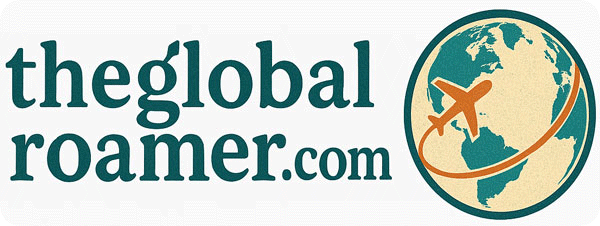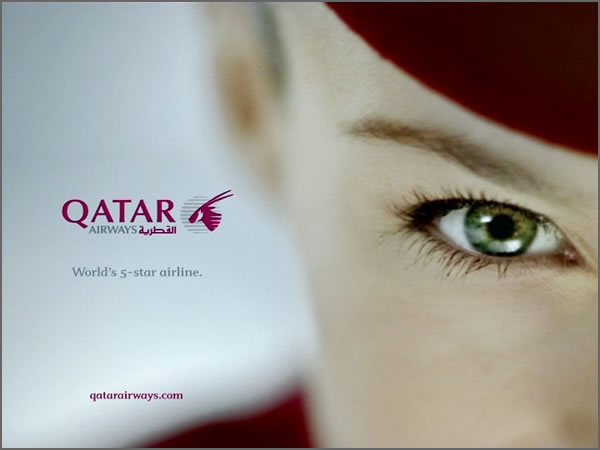Top 10 Historical Tourist Sites in the World to Visit - The Global Roamer
Discover the top 10 historical tourist sites worldwide, from the Pyramids of Giza to Machu Picchu. Explore their rich history, itineraries, best times to visit, and travel tips with The Global Roamer.

Top 10 Historical Tourist Sites in the World for The Global Roamer
Exploring the world’s most iconic historical sites is like stepping into a time machine, where ancient stones whisper tales of human ingenuity, triumph, and mystery. For travelers seeking to connect with the past, these 10 destinations, each from a different country, with no more than two sites per nation, offer unforgettable journeys into history. From towering pyramids to cliff-carved cities, here’s your guide to the top historical tourist sites, complete with their rich histories, practical details, nearest airports, sample itineraries, and the best times to visit.
1. Pyramids of Giza, Egypt
History
The Pyramids of Giza, built around 4,500 years ago during the Fourth Dynasty of the Old Kingdom, are the last surviving Wonder of the Ancient World. The Great Pyramid, constructed for Pharaoh Khufu, stands alongside the pyramids of Khafre and Menkaure, with the enigmatic Great Sphinx nearby. These monumental tombs, made of over 2.3 million limestone blocks, showcase ancient Egypt’s advanced engineering and their belief in the afterlife.
Details
- Location: Giza, near Cairo, Egypt
- Entry Fees: Approximately $12 USD for the Giza Plateau; an additional $5 for the Great Pyramid’s interior
- Timings: 8:00 AM to 5:00 PM daily
- Highlights: Explore the Great Pyramid’s interior, visit the Solar Boat Museum, and marvel at the Sphinx.
Nearest Airport
- Cairo International Airport (CAI): 25 km away, about a 45-minute drive.
Sample Itinerary (3 Days in Cairo)
- Day 1: Arrive in Cairo, and check into a hotel near the pyramids (e.g., Marriott Mena House). Visit the Giza Plateau in the afternoon, including the pyramids and Sphinx. Enjoy a sunset camel ride.
- Day 2: Tour the Egyptian Museum in Tahrir Square, then visit Saqqara to see the Step Pyramid of Djoser. Evening at Khan el-Khalili bazaar.
- Day 3: Day trip to Dashur for the Red and Bent Pyramids, then depart.
Best Time to Visit
October to April, when temperatures are cooler (20–25°C). Avoid summer (May–September) due to intense heat. Early mornings beat crowds and offer pleasant light for photos.
2. Machu Picchu, Peru
History
Nestled high in the Andes, Machu Picchu is a 15th-century Inca citadel, likely built as a royal retreat for Emperor Pachacuti. Abandoned during the Spanish conquest, it was rediscovered in 1911 by Hiram Bingham. Its precise stonework and terraced design, set against misty peaks, make it a UNESCO World Heritage Site and one of the New Seven Wonders.
Details
- Location: Near Aguas Calientes, Peru
- Entry Fees: ~$45 USD (includes Machu Picchu entry); additional $20 for Huayna Picchu climb
- Timings: 6:00 AM to 5:30 PM daily
- Highlights: Temple of the Sun, Intihuatana stone, and panoramic views from the Sun Gate.
Nearest Airport
- Alejandro Velasco Astete International Airport (CUZ), Cusco: 75 km from Aguas Calientes, reached by train or bus (3–4 hours).
Sample Itinerary (5 Days in Cusco Region)
- Day 1: Arrive in Cusco, acclimate to altitude, and explore the historic city center (Plaza de Armas, Qorikancha).
- Day 2: Day tour of the Sacred Valley (Pisac, Ollantaytambo).
- Day 3: Train to Aguas Calientes, overnight stay.
- Day 4: Early morning visit to Machu Picchu (guided tour recommended). Optional Huayna Picchu hike. Return to Cusco.
- Day 5: Free morning in Cusco, then depart.
Best Time to Visit
April to October (dry season) for clear skies and safer trails. May and September are ideal for fewer crowds and mild weather (15–20°C). Book tickets months in advance.
3. Petra, Jordan
History
Petra, the “Rose City,” was carved into pink sandstone cliffs by the Nabataean Kingdom around 300 BCE. A thriving trade hub, it featured sophisticated water systems and iconic structures like Al-Khazneh (The Treasury). Rediscovered in 1812, it’s now a UNESCO site and one of the New Seven Wonders, famous for its rock-cut architecture.
Details
- Location: Wadi Musa, Jordan
- Entry Fees: ~$70 USD for a 1-day pass
- Timings: 6:00 AM to 6:00 PM daily
- Highlights: Walk through the Siq Canyon, visit The Treasury, and hike to the Monastery (Ad Deir).
Nearest Airport
- King Hussein International Airport (AQJ), Aqaba: 125 km away, 2-hour drive. Alternatively, Queen Alia International Airport (AMM), Amman, is 235 km (3 hours).
Sample Itinerary (4 Days in Jordan)
- Day 1: Arrive in Amman, and explore the Citadel and Roman Theatre.
- Day 2: Travel to Wadi Musa, evening Petra by Night tour (candlelit Siq walk).
- Day 3: Full-day Petra exploration with a guide, including the Royal Tombs and Monastery hike.
- Day 4: Visit Wadi Rum for a desert tour, then depart from Aqaba or Amman.
Best Time to Visit
March to May or September to November for pleasant weather (15–25°C). Avoid summer heat and winter rains. Early mornings or late afternoons reduce crowds.
4. Angkor Wat, Cambodia
History
Built-in the 12th century by King Suryavarman II, Angkor Wat is the largest religious monument in the world, originally dedicated to the Hindu god Vishnu before becoming a Buddhist temple. Part of the vast Angkor complex, its intricate bas-reliefs and towering spires reflect the Khmer Empire’s architectural prowess.
Details
- Location: Siem Reap, Cambodia
- Entry Fees: $37 USD for a 1-day pass, $62 for 3 days
- Timings: 5:00 AM to 6:00 PM daily
- Highlights: Sunrise at Angkor Wat, Ta Prohm’s tree-entwined ruins, and Angkor Thom’s Bayon Temple.
Nearest Airport
- Siem Reap International Airport (SAI): 7 km from Angkor Wat, ~15-minute drive.
Sample Itinerary (4 Days in Siem Reap)
- Day 1: Arrive in Siem Reap, and visit local markets and Wat Preah Prom Rath.
- Day 2: Sunrise at Angkor Wat, followed by a guided tour of the main temple and Angkor Thom.
- Day 3: Explore Ta Prohm, Banteay Srei, and the Landmine Museum.
- Day 4: Morning visit to Tonle Sap Lake’s floating villages, then depart.
Best Time to Visit
November to March (dry season) for cooler temperatures (20–30°C). Sunrise visits are popular, so arrive early. Book a tuk-tuk or guide for easy navigation.
5. The Colosseum, Italy
History
Constructed between 72–80 CE under the Flavian emperors, the Colosseum (Flavian Amphitheatre) was Rome’s grand arena for gladiatorial contests and public spectacles, holding up to 50,000 spectators. Its enduring arches and storied past make it a UNESCO site and one of the New Seven Wonders.
Details
- Location: Rome, Italy
- Entry Fees: ~$17 USD (includes Roman Forum and Palatine Hill)
- Timings: 8:30 AM to 7:00 PM daily (last entry 6:00 PM)
- Highlights: Arena floor access, underground chambers, and nearby Roman Forum.
Nearest Airport
- Leonardo da Vinci–Fiumicino Airport (FCO): 30 km from Rome, ~40-minute drive or train.
Sample Itinerary (3 Days in Rome)
- Day 1: Arrive in Rome, visit the Colosseum and Roman Forum in the afternoon.
- Day 2: Explore the Pantheon, Trevi Fountain, and Vatican City (Sistine Chapel, St. Peter’s Basilica).
- Day 3: Morning at the Catacombs of San Callisto, then depart.
Best Time to Visit
April to June or September to October for mild weather (15–25°C) and fewer crowds. Book skip-the-line tickets online to avoid long queues.
6. Taj Mahal, India
History
Commissioned in 1632 by Emperor Shah Jahan for his wife Mumtaz Mahal, the Taj Mahal is a Mughal masterpiece of white marble, blending Persian, Islamic, and Indian architecture. A UNESCO site and New Seven Wonder, it symbolizes eternal love and attracts millions annually.
Details
- Location: Agra, Uttar Pradesh, India
- Entry Fees: ~$13 USD for foreigners; $2.50 extra for mausoleum entry
- Timings: 6:00 AM to 7:00 PM, closed Fridays
- Highlights: Symmetrical marble facade, reflecting pool, and intricate inlays.
Nearest Airport
- Pandit Deen Dayal Upadhyay Airport (AGR), Agra: 13 km, 30-minute drive. Alternatively, Indira Gandhi International Airport (DEL), Delhi, is 230 km (3 hours).
Sample Itinerary (4 Days in the Golden Triangle)
- Day 1: Arrive in Delhi, and explore Qutub Minar and Humayun’s Tomb.
- Day 2: Travel to Agra (3 hours by train), visit the Taj Mahal at sunrise and Agra Fort.
- Day 3: Drive to Jaipur, and visit Amber Fort and City Palace.
- Day 4: Morning at Hawa Mahal, then return to Delhi for departure.
Best Time to Visit
October to March for pleasant weather (10–25°C). Sunrise visits offer stunning views and fewer crowds. Book tickets online to avoid lines.
7. Acropolis of Athens, Greece
History
The Acropolis, a 5th-century BCE citadel, is the heart of ancient Greek civilization. Its centerpiece, the Parthenon, was dedicated to Athena, the goddess of wisdom. Built during Athens’ Golden Age, it symbolizes democracy and philosophy, earning UNESCO status.
Details
- Location: Athens, Greece
- Entry Fees: ~$22 USD (includes other sites like the Ancient Agora)
- Timings: 8:00 AM to 8:00 PM daily (summer); 8:00 AM to 5:00 PM (winter)
- Highlights: Parthenon, Erechtheion, and Acropolis Museum.
Nearest Airport
- Athens International Airport (ATH): 20 km, ~30-minute metro ride to Acropoli station.
Sample Itinerary (3 Days in Athens)
- Day 1: Arrive in Athens, visit the Acropolis and Acropolis Museum.
- Day 2: Explore Plaka, the National Archaeological Museum, and Syntagma Square.
- Day 3: Day trip to Delphi or Cape Sounion, then depart.
Best Time to Visit
April to June or September to October for mild weather (15–25°C). Early mornings or late afternoons avoid heat and crowds. Wear sturdy shoes for uneven terrain.
8. Easter Island (Rapa Nui), Chile
History
Easter Island’s moai statues, carved by the Rapa Nui people between the 10th and 16th centuries, are monumental tributes to ancestors. Scattered across this remote island, the statues’ creation and transport remain a mystery. Rapa Nui National Park, a UNESCO site, preserves these iconic figures.
Details
- Location: Hanga Roa, Easter Island, Chile
- Entry Fees: ~$80 USD for Rapa Nui National Park
- Timings: Open daily; key sites like Rano Raraku and Tongariki are accessible from sunrise to sunset
- Highlights: Rano Raraku quarry, Ahu Tongariki’s 15 moai, and Anakena Beach.
Nearest Airport
- Mataveri International Airport (IPC), Hanga Roa: 1 km from town, ~5-minute drive.
Sample Itinerary (5 Days on Easter Island)
- Day 1: Arrive in Hanga Roa, and visit Tahai Ceremonial Complex at sunset.
- Day 2: Full-day tour of Rano Raraku and Tongariki, plus Orongo village.
- Day 3: Explore Anakena Beach and Ahu Nau Nau, and relax in Hanga Roa.
- Day 4: Hike to Rano Kau volcano and Orongo ceremonial village.
- Day 5: Free morning for souvenirs, then depart.
Best Time to Visit
January to March for warm weather (20–25°C) and fewer crowds. Book flights and accommodations early due to limited availability.
9. Stonehenge, United Kingdom
History
Stonehenge, a prehistoric stone circle built between 3000–2000 BCE, is a marvel of Neolithic engineering. Likely used for astronomical observations or ceremonies, its massive sarsens and bluestones were transported and erected without modern tools, fueling myths about its origins. It’s a UNESCO site steeped in mystery.
Details
- Location: Wiltshire, England
- Entry Fees: ~$25 USD (adult, booked in advance)
- Timings: 9:30 AM to 5:00 PM daily; extended hours in summer
- Highlights: Stone Circle, visitor center with artifacts, and nearby Avebury stones.
Nearest Airport
- London Heathrow Airport (LHR): 130 km, 2-hour drive. Alternatively, Southampton Airport (SOU) is 60 km (1 hour).
Sample Itinerary (3 Days in Southern England)
- Day 1: Arrive in London, and explore the British Museum.
- Day 2: Day trip to Stonehenge (consider a guided tour including Bath or Avebury). Evening in Salisbury.
- Day 3: Visit Salisbury Cathedral, then return to London for departure.
Best Time to Visit
May to September for mild weather (10–20°C) and longer daylight. Book timed-entry tickets online, especially for summer solstice events.
10. Terracotta Army, China
History
Discovered in 1974, the Terracotta Army was crafted around 210 BCE to guard Emperor Qin Shi Huang in the afterlife. Thousands of life-sized clay soldiers, horses, and chariots, each with unique features, reveal the First Emperor’s power and ancient Chinese artistry. A UNESCO site, it’s a window into China’s early imperial era.
Details
- Location: Xi’an, Shaanxi, China
- Entry Fees: ~$17 USD (includes museum)
- Timings: 8:30 AM to 5:00 PM daily
- Highlights: Pit 1’s massed warriors, the Bronze Chariot exhibit, and the nearby Qin Shi Huang Mausoleum.
Nearest Airport
- Xi’an Xianyang International Airport (XIY): 40 km, ~1-hour drive.
Sample Itinerary (4 Days in Xi’an)
- Day 1: Arrive in Xi’an, and visit the Muslim Quarter and the Great Mosque.
- Day 2: Full-day tour of the Terracotta Army and Qin Shi Huang Mausoleum.
- Day 3: Explore Xi’an’s city walls by bike and the Shaanxi History Museum.
- Day 4: Morning visit to the Big Wild Goose Pagoda, then depart.
Best Time to Visit
March to May or September to November for mild weather (10–20°C). Early mornings avoid tour bus crowds. Guided tours enhance understanding of the site’s history.
Travel Tips for The Global Roamer
- Book Early: Many sites (Machu Picchu, Petra, Colosseum) have limited daily tickets. Reserve online to secure spots.
- Guides Enhance Experience: Local guides provide context, especially at complex sites like Angkor Wat or Petra.
- Respect the Sites: Follow preservation rules (e.g., no drones at Machu Picchu, no touching moai on Easter Island).
- Pack Smart: Comfortable shoes, sun protection, and water are essential for outdoor sites like Giza or Stonehenge.
- Combine Destinations: Pair nearby sites (e.g., Taj Mahal with Delhi’s monuments or Acropolis with Delphi) for efficient itineraries.
These 10 historical sites offer a journey through humanity’s greatest achievements, from ancient Egypt’s pyramids to China’s clay warriors. Plan your visit with The Global Roamer, and let history come alive under your feet. Safe travels!





















